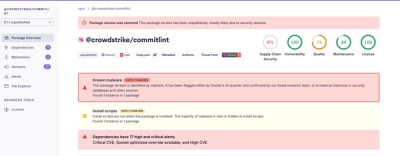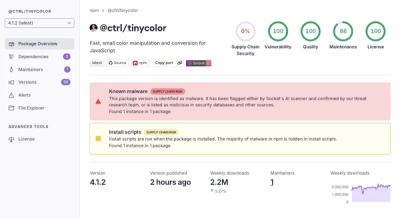redis-py
The Python interface to the Redis key-value store.






Installation | Usage | Advanced Topics | Contributing
Note: redis-py 5.0 will be the last version of redis-py to support Python 3.7, as it has reached end of life. redis-py 5.1 will support Python 3.8+.
Note: redis-py 6.1.0 will be the last version of redis-py to support Python 3.8, as it has reached end of life. redis-py 6.2.0 will support Python 3.9+.
How do I Redis?
Learn for free at Redis University
Try the Redis Cloud
Dive in developer tutorials
Join the Redis community
Work at Redis
Installation
Start a redis via docker (for Redis versions >= 8.0):
docker run -p 6379:6379 -it redis:latest
Start a redis via docker (for Redis versions < 8.0):
docker run -p 6379:6379 -it redis/redis-stack:latest
To install redis-py, simply:
$ pip install redis
For faster performance, install redis with hiredis support, this provides a compiled response parser, and for most cases requires zero code changes.
By default, if hiredis >= 1.0 is available, redis-py will attempt to use it for response parsing.
$ pip install "redis[hiredis]"
Looking for a high-level library to handle object mapping? See redis-om-python!
Supported Redis Versions
The most recent version of this library supports Redis version 7.2, 7.4 and 8.0.
The table below highlights version compatibility of the most-recent library versions and redis versions.
| 3.5.3 | <= 6.2 Family of releases |
| >= 4.5.0 | Version 5.0 to 7.0 |
| >= 5.0.0 | Version 5.0 to 7.4 |
| >= 6.0.0 | Version 7.2 to current |
Usage
Basic Example
>>> import redis
>>> r = redis.Redis(host='localhost', port=6379, db=0)
>>> r.set('foo', 'bar')
True
>>> r.get('foo')
b'bar'
The above code connects to localhost on port 6379, sets a value in Redis, and retrieves it. All responses are returned as bytes in Python, to receive decoded strings, set decode_responses=True. For this, and more connection options, see these examples.
RESP3 Support
To enable support for RESP3, ensure you have at least version 5.0 of the client, and change your connection object to include protocol=3
>>> import redis
>>> r = redis.Redis(host='localhost', port=6379, db=0, protocol=3)
Connection Pools
By default, redis-py uses a connection pool to manage connections. Each instance of a Redis class receives its own connection pool. You can however define your own redis.ConnectionPool.
>>> pool = redis.ConnectionPool(host='localhost', port=6379, db=0)
>>> r = redis.Redis(connection_pool=pool)
Alternatively, you might want to look at Async connections, or Cluster connections, or even Async Cluster connections.
Redis Commands
There is built-in support for all of the out-of-the-box Redis commands. They are exposed using the raw Redis command names (HSET, HGETALL, etc.) except where a word (i.e. del) is reserved by the language. The complete set of commands can be found here, or the documentation.
Advanced Topics
The official Redis command documentation
does a great job of explaining each command in detail. redis-py attempts
to adhere to the official command syntax. There are a few exceptions:
-
MULTI/EXEC: These are implemented as part of the Pipeline class.
The pipeline is wrapped with the MULTI and EXEC statements by
default when it is executed, which can be disabled by specifying
transaction=False. See more about Pipelines below.
-
SUBSCRIBE/LISTEN: Similar to pipelines, PubSub is implemented as
a separate class as it places the underlying connection in a state
where it can't execute non-pubsub commands. Calling the pubsub
method from the Redis client will return a PubSub instance where you
can subscribe to channels and listen for messages. You can only call
PUBLISH from the Redis client (see this comment on issue
#151
for details).
For more details, please see the documentation on advanced topics page.
Pipelines
The following is a basic example of a Redis pipeline, a method to optimize round-trip calls, by batching Redis commands, and receiving their results as a list.
>>> pipe = r.pipeline()
>>> pipe.set('foo', 5)
>>> pipe.set('bar', 18.5)
>>> pipe.set('blee', "hello world!")
>>> pipe.execute()
[True, True, True]
PubSub
The following example shows how to utilize Redis Pub/Sub to subscribe to specific channels.
>>> r = redis.Redis(...)
>>> p = r.pubsub()
>>> p.subscribe('my-first-channel', 'my-second-channel', ...)
>>> p.get_message()
{'pattern': None, 'type': 'subscribe', 'channel': b'my-second-channel', 'data': 1}
Redis’ search and query capabilities default dialect
Release 6.0.0 introduces a client-side default dialect for Redis’ search and query capabilities.
By default, the client now overrides the server-side dialect with version 2, automatically appending DIALECT 2 to commands like FT.AGGREGATE and FT.SEARCH.
Important: Be aware that the query dialect may impact the results returned. If needed, you can revert to a different dialect version by configuring the client accordingly.
>>> from redis.commands.search.field import TextField
>>> from redis.commands.search.query import Query
>>> from redis.commands.search.index_definition import IndexDefinition
>>> import redis
>>> r = redis.Redis(host='localhost', port=6379, db=0)
>>> r.ft().create_index(
>>> (TextField("name"), TextField("lastname")),
>>> definition=IndexDefinition(prefix=["test:"]),
>>> )
>>> r.hset("test:1", "name", "James")
>>> r.hset("test:1", "lastname", "Brown")
>>>
>>> query = "@name: James Brown"
>>> q = Query(query)
>>> res = r.ft().search(q)
>>>
>>> query = "@name: James Brown"
>>> q = Query(query).dialect(1)
>>> res = r.ft().search(q)
You can find further details in the query dialect documentation.
Author
redis-py is developed and maintained by Redis Inc. It can be found here, or downloaded from pypi.
Special thanks to:
- Andy McCurdy (sedrik@gmail.com) the original author of redis-py.
- Ludovico Magnocavallo, author of the original Python Redis client,
from which some of the socket code is still used.
- Alexander Solovyov for ideas on the generic response callback
system.
- Paul Hubbard for initial packaging support.






